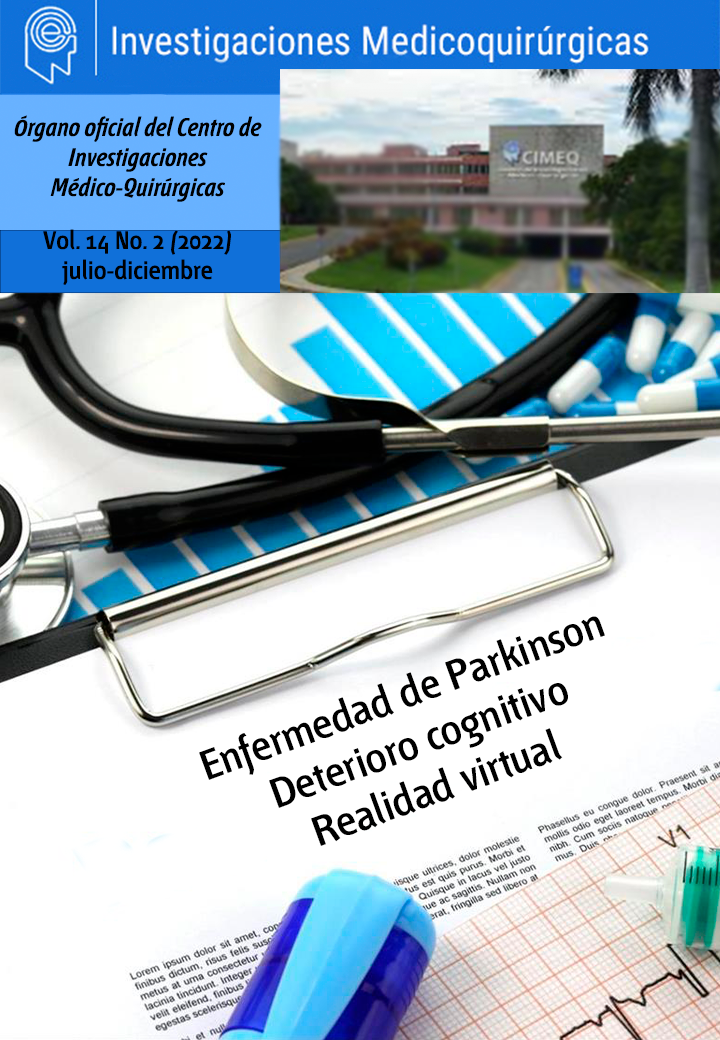Effect of the use of the Armeo Spring in increasing the articulate amplitude of the superior limbs
Keywords:
Armeo Spring, articulate amplitude, superior limbs, cerebrovascular accidentsAbstract
Introduction: In recent years, new technologies have been developed aimed at supporting the rehabilitation of the upper limbs to achieve greater and faster recovery of lost functions in patients with sequelae of cerebrovascular accident. Among these is the use of robotic systems that have proven to be an effective tool for this purpose.
Methods: 42 patients with hemiparesis as a sequela of cerebrovascular accident were studied, with an average age of 47.2 years, who received treatment with the use of the Armeo Spring three times a week for 45 minutes, combined with conventional therapy. The evaluation protocol used was the goniometric measurement of the joints and the application of the Wilcoxon Matched Pairs test.
Results: The analysis of the results allowed to appreciate the degree of improvement of the sample under study.
Conclusions: A significant improvement in the joint width of the upper limbs was observed after using the Armeo Spring in the rehabilitation process, which allowed a greater functionality of the same.
References
Koening S., Dunser A., Bartneck C., Dalrymple-Alford J., and Crucian G. “International conference on virtual rehabilitation (icvr),” in Development of Virtual Environments for Patient- Centered Rehabilitation, 2011.
Levin M., Sveistrup H., and Subramanian S. Feedback and virtual environments for motor learning and rehabilitation/Rétroaction et environnement virtuel pour l’apprentissage moteur et la rééducation, F. G. L. (Ed), Ed., 2010.
Duret, Christophea; Mazzoleni, Stefanoc. Armeo: rehabilitación del miembro superior tras DCA. Neurorehabilitación. 2017;41(1):5-15.
Yáñez-Sánchez A, Cuesta-Gómez A. Efectividad del dispositivo Armeo® en la rehabilitación del miembro superior en pacientes que han sufrido un ictus. REV NEUROL. 2020;70:93-102.
Perry BE, Evans EK, Stokic DS. Weight compensation characteristics of Armeo ® Spring exoskeleton: implications for clinical practice and research. J Neuroeng Rehabil. 2017;14:14.
Grafman J, Litvan I. Evidence for four forms of neuroplasticity. En: Grafman J, Christen Y Eds. Neuronal plasticity building a bridge from the laboratory to the clinic. Springer- Verlag. Berlin. 1999. Pp. 131-139.
Gómez Fernández L., Álvarez González E., Macías Betancourt R., Galvizu Sánchez R., Palmero R., Padilla Puentes E., Vizcay Y., Quesada Rodríguez E. Modificaciones en las proyecciones córtico-motoneuronales que van a la mano en pacientes que reciben rehabilitación intensiva. Rehabilitación (Madr). 2006;40(2):79-85.
Nodarse RJ, Torres AM, Francia GT, et al. Tratamiento defectológico para el aumento de la amplitud y movilidad articular de los movimientos del hombro en pacientes con secuelas de lesiones estáticas encefálicas. Rev Mex Neuroci. 2005;6(2):141-4.
Downloads
Published
How to Cite
Issue
Section
License
The authors retain copyright and all unrestricted publication rights.
Medicoquirúrgicas Research is licensed under the Creative Commons Attribution-Noncommercial 4.0 International License (CC BY-NC 4.0) and follows the SciELO Publishing Schema (SciELO PS) for publishing in XML format.
You are free to:
- Share — copy and redistribute the material in any medium or format.
- Adapt — remix, transform, and build upon the material.
The license cannot revoke these freedoms as long as you follow the license terms.
Under the following terms:
- Attribution — You must give appropriate credit, provide a link to the license, and indicate if changes were made. You may do this in any reasonable manner, but not in any way that suggests the licensor endorses you or your use.
Non-Commercial — You may not use the material for commercial purposes.
No Additional Restrictions — You may not apply legal terms or technological measures that legally restrict others from making any use permitted by the license.
Notices:
You do not have to comply with the license for elements of the material in the public domain or where their use is permitted by an applicable exception or limitation.
No warranties are given. The license may not give you all the permissions you need for your intended use. For example, other rights such as publicity, privacy, or moral rights may limit how you use the material.



